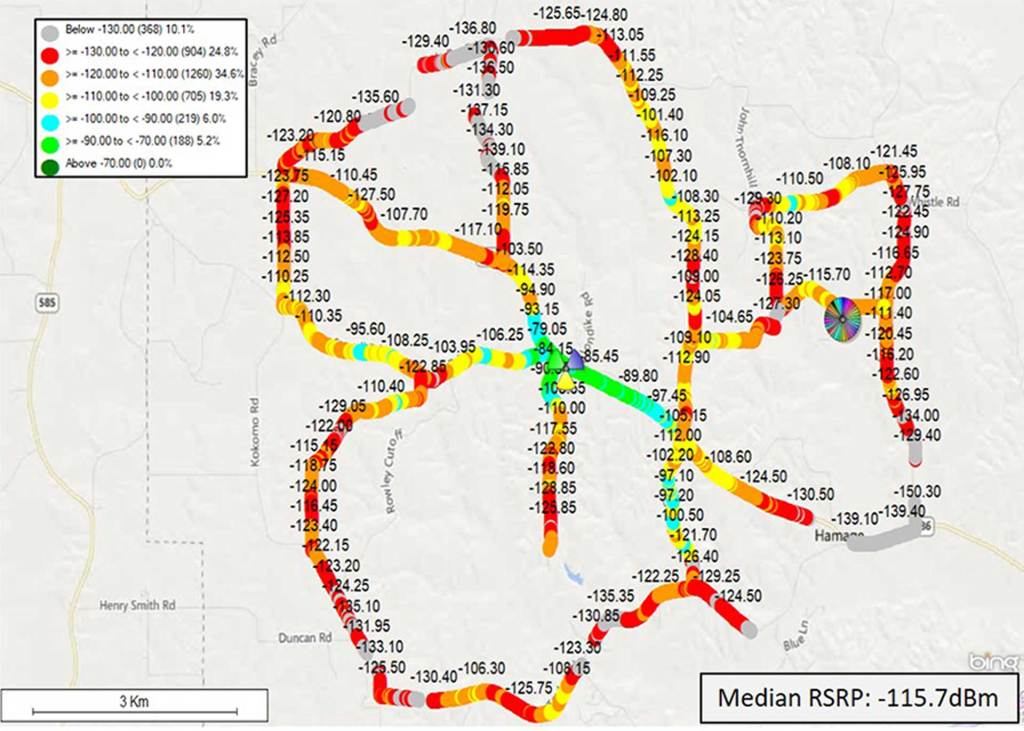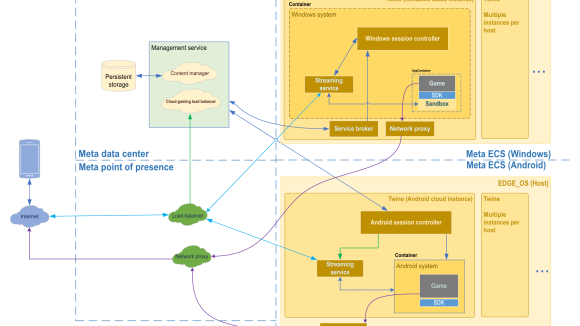As part of our efforts to help expand connectivity around the world, Facebook Connectivity has been prototyping SuperCell, a wide-area coverage solution for increasing mobile connectivity in rural communities. Now, after working with telecom industry partners to conduct several trials and data analyses, we’re ready to share what we’ve learned.
Rather than produce this solution ourselves, we hope the results of our testing and analyses will provide a playbook for the telecom industry to bring the technology to market and help expand mobile coverage in rural areas in a way that is sustainable and cost-effective.
In many rural areas around the world, mobile is the only option for internet connectivity. But many rural communities still lack mobile internet access because the macrocell technologies that are traditionally used to deliver mobile connectivity to urban areas are simply not economically viable for remote communities in lower-middle-income countries. SuperCell is designed to be a cost-effective, reliable alternative to traditional macrocell sites and to better address the need for connectivity in rural areas.
The coverage gap
According to the GSMA, 600 million people globally live outside of areas covered by mobile broadband networks. This coverage gap is particularly concentrated in rural and remote areas such as in sub-Saharan Africa, which is home to 67 percent of the world’s uncovered population. While the number of people online has been increasing year over year, only about 40 percent of people living in lower-middle-income countries are connected, compared with nearly 75 percent in higher-income countries. If current trends continue, the GSMA estimates that more than 40 percent of the population in lower-middle-income countries still won’t be online by 2025.
Mobile network operators (MNOs) face many challenges when it comes to shrinking the coverage gap. Rural areas typically generate a lower average revenue per user (ARPU) and thus a lower profit incentive. They also tend to be less densely populated, have a rugged topography, and lack cost-effective backhaul and grid power, making it difficult to expand mobile coverage in these areas.
What is SuperCell?
SuperCell is a large-area coverage solution that leverages towers up to 250 meters high and high-gain, narrow-sectored antennas to increase mobile data coverage range and capacity.
Our field measurements found that a 36-sector SuperCell base station mounted on a 250-meter tower can serve a geographical coverage area up to 65 times larger than a standard three-sector rural macro base station on a 30-meter tower in the same topography. In an analysis of uncovered regions in Nigeria, using publicly available population density data coupled with insight from Facebook Connectivity’s Advanced Network Planning tools, we determined that a single SuperCell could replace 15 to 25 traditional macrocells, or hundreds of small cells, to provide coverage to the same number of people; and that a network of SuperCells could be deployed at more than 33 percent lower overall total cost of ownership (TCO) compared to a network of macrocells.
Considering the coverage gap, topography, and infrastructure needs in sub-Saharan Africa, we believe this is a region where SuperCell has potential for high impact.
How does SuperCell compare to alternative solutions?
We don’t believe there’s a silver bullet for connecting the world. The telecom industry has developed several innovative technologies and business models to address the coverage gap in rural areas. These range from inexpensive small cell solutions that can provide coverage to small settlements (a 0.5- to 1-kilometer radius) with satellite backhaul; large-area coverage cellular solutions using tethered aerostats; and large-area coverage solutions using stratospheric balloons. There are also technologies aimed at making rural backhaul more cost-effective, including modular microwave backhaul solutions in unlicensed bands, low Earth orbit (LEO) satellite constellations to provide ubiquitous coverage, and medium Earth orbit (MEO) constellations.
The table below provides a brief summary of some of the pros and cons of various solutions, including SuperCell.
How we developed and tested SuperCell
Propagation testing
SuperCell’s coverage range advantage is based on the tower’s greater height and the use of high-gain antennas. Several propagation models have been explored in propagation physics literature, but a rule of thumb is that doubling the base station height results in 6 dB of propagation advantage. So, in going from a 30-meter tower to a 240-meter tower, there is a propagation advantage of roughly 18 dB.
Globally, cellular spectrum bands such as 2G, 3G, and LTE tend to range from 600 MHz to 2.7 GHz. Typical base station antennas used in macrocell deployments have a gain of 18 dBi in the 2,500 MHz band. SuperCell uses antennas that provide directivity gain of up to 29 dBi in the same band. By combining the two, we get a total propagation advantage of 29 dB (18 dB from the height advantage and 11 dB from the antenna directivity gain). Note that both the propagation advantages (tower height and antenna gain) hold symmetrically for both uplink and downlink. Assuming a path loss exponent of 4, the 29 dB propagation advantage of SuperCell translates to ~5.3x range advantage.
A big part of SuperCell’s economic value proposition lies in quantifying and characterizing this propagation. The Facebook Connectivity team and our partners conducted propagation measurements using broadcast towers situated in rural areas of the United States, including Quad City, Illinois, Metcalf, Georgia, and Frenchburg, Kentucky. The Quad City location has a relatively flat terrain with croplands covering the land. The Metcalf location has flat terrain with thick deciduous trees covering the land. The Frenchburg location is on rugged, mountainous terrain with croplands covering the land.
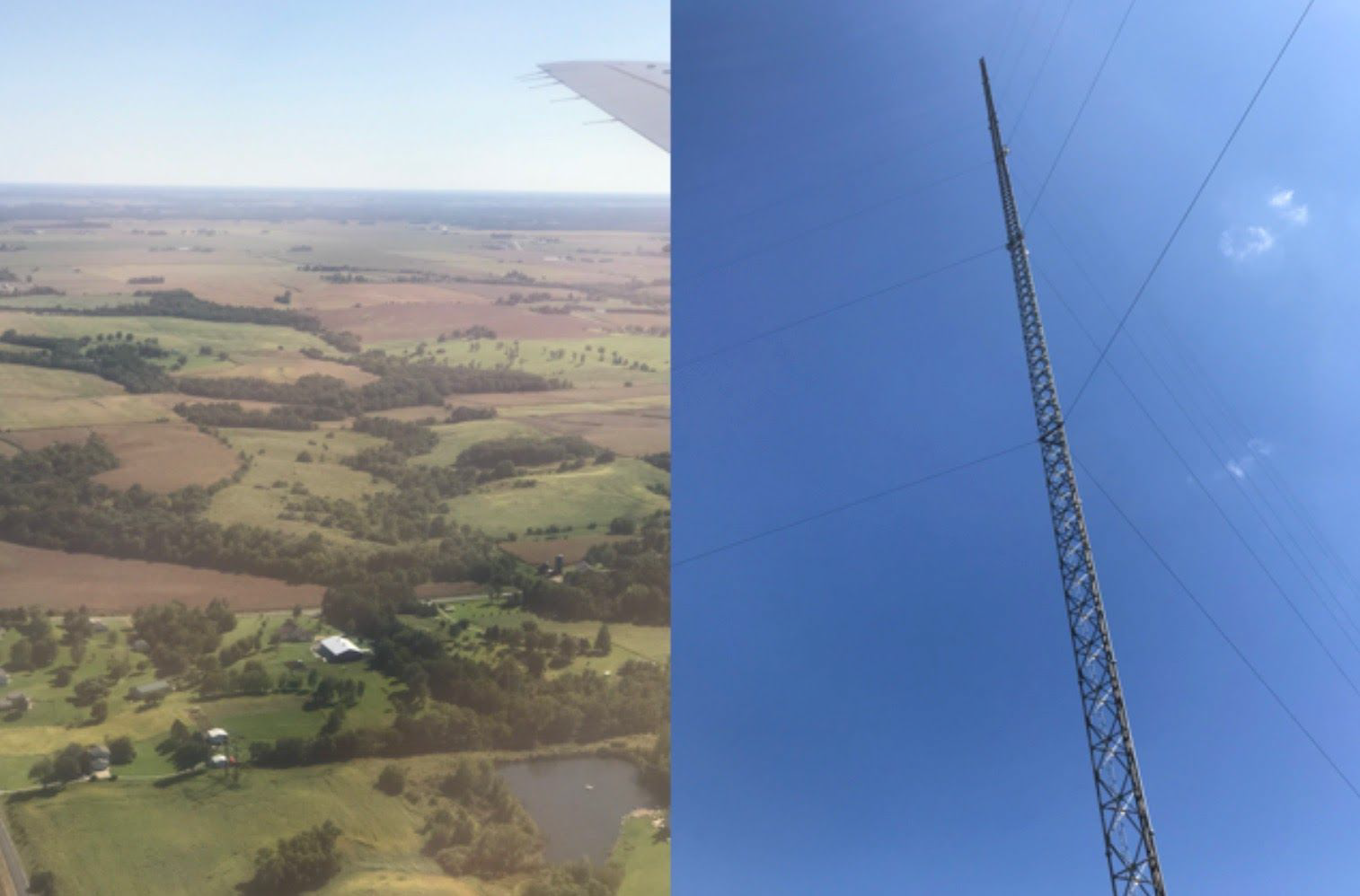
We conducted separate drive test measurements with transmitters placed at several different heights on the broadcast towers. Using drive test measurements, we built models of propagation path loss for different transmitter heights. These experimentally tuned propagation path loss models were then combined with empirically collected multisector antenna patterns. The results shown below demonstrate the coverage advantage of SuperCell over standard macrocells in areas of flat terrain.

Angular spread
SuperCell’s coverage advantage implies that it covers more people, which in turn implies that the capacity served by the SuperCell base station must scale accordingly. The available spectrum is often limited, so this higher capacity has to come from increased area spectral efficiency. SuperCell employs high order sectorization (HOS) with a frequency reuse of 1 across sectors to address this. However, one of the key challenges of scaling capacity with HOS is intersector interference, which can result in capacity scaling less than linearly with the number of sectors. This can be caused by:
- Sectorized antenna pattern overlap: Any physical antenna design will have side lobes that interfere with neighboring sectors (this interference effect can be accounted for during deployment planning).
- Multipath scattering: The clutter around a site causes multipath scattering of the downlink and uplink signals. This scattering has the effect of spreading the signals received on the base station antennas in the angular domain. This is referred to as angular spread.
We hypothesize that typical uncovered rural regions have single-story rural construction with an average building clutter height of less than 10 meters. As part of our tests in Amarillo, Texas, we mounted a directional dish antenna receiver on a 300-meter broadcast tower at a variety of heights. Using a patented technique, our team experimentally characterized the angular spread as a function of base station antenna height up to 250 meters and ranges up to 20 kilometers.
As part of this test, we conducted extensive ray tracing simulations for the rural neighborhood around the Amarillo test site using the available building clutter information. The test demonstrated that the large differential between the average height of the building clutter and the height of the SuperCell base station resulted in low angular spread. This in turn enabled low intersector interference and a better scaling of capacity with respect to the number of sectors.
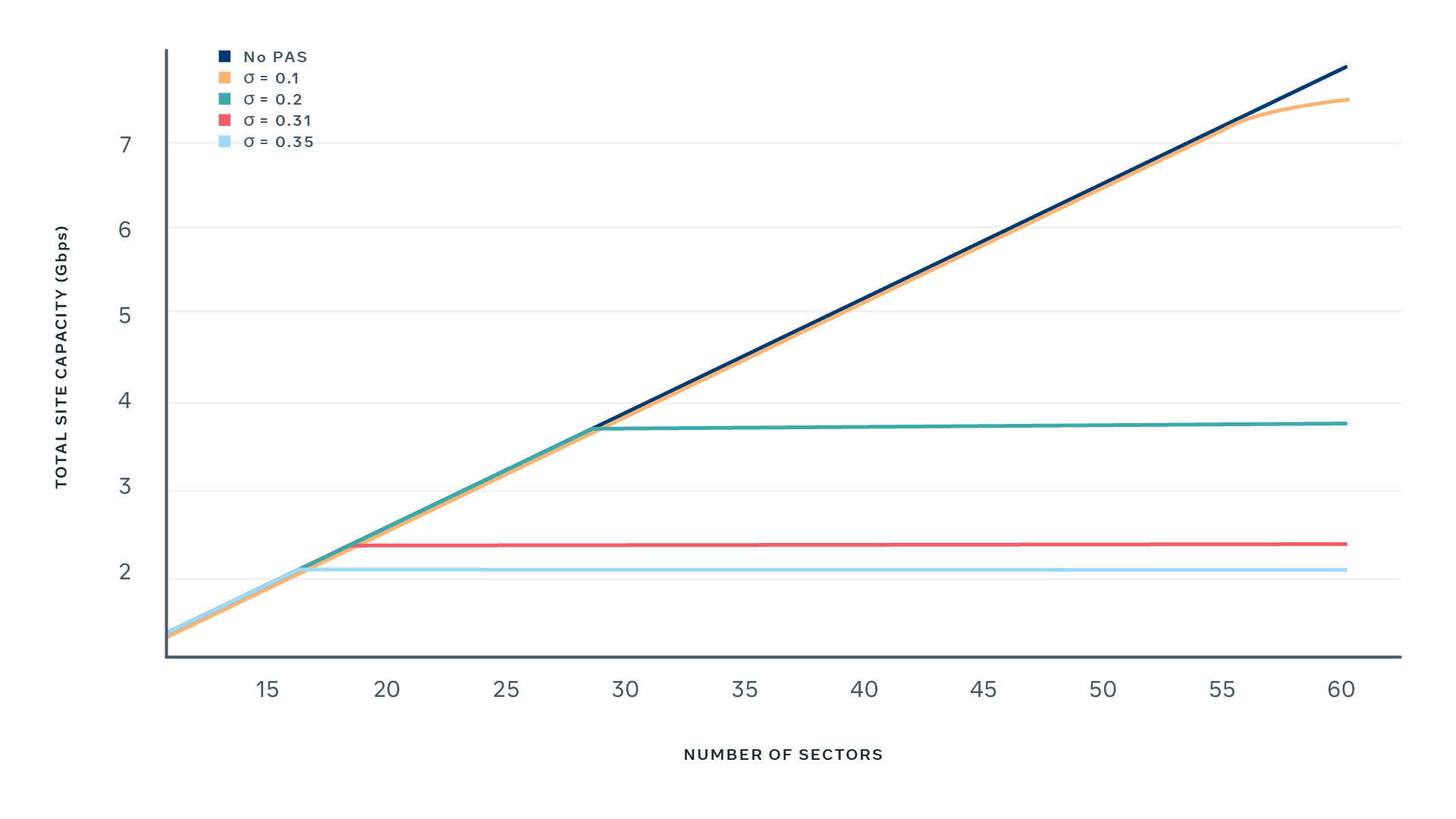
The experiments done in Quad City, Metcalf, and Amarillo provide evidence of SuperCell’s advantage over the coverage and capacity of traditional macrocell solutions.
LTE field tests
Once our team experimentally verified SuperCell’s coverage and spectrum efficiency advantages, we set out to verify SuperCell’s throughput performance using LTE waveforms at long ranges, intersector handoff performance, and its performance on some common applications like video streaming and video and voice calls.
Our team conducted end-to-end SuperCell LTE testing using a 12-sector antenna system (over 120 degrees of azimuth) in a rural area near Truth or Consequences, New Mexico. The SuperCell base station was mounted on an 11-meter tower atop a hill overlooking a valley. The vertical separation between base station antenna and the user equipment ranged from 150 meters to 335 meters, depending on the location of the user equipment on the drive test route. The test location had a rocky desert topology with minimal foliage, and tests were conducted using LTE Band 41 (2,500 MHz).
The testing demonstrated that SuperCell could facilitate two-way voice and video chat at a range of 38 kilometers. It also demonstrated a downlink throughput of 6 Mbps (50th percentile) and 7.8 Mbps (90th percentile), and an uplink throughput of 1 Mbps (50th percentile) and 1.2 Mbps (90th percentile) to a Samsung S7 user equipment (UE) at a range of 40 kilometers. Intersector UE handover also worked seamlessly during testing.
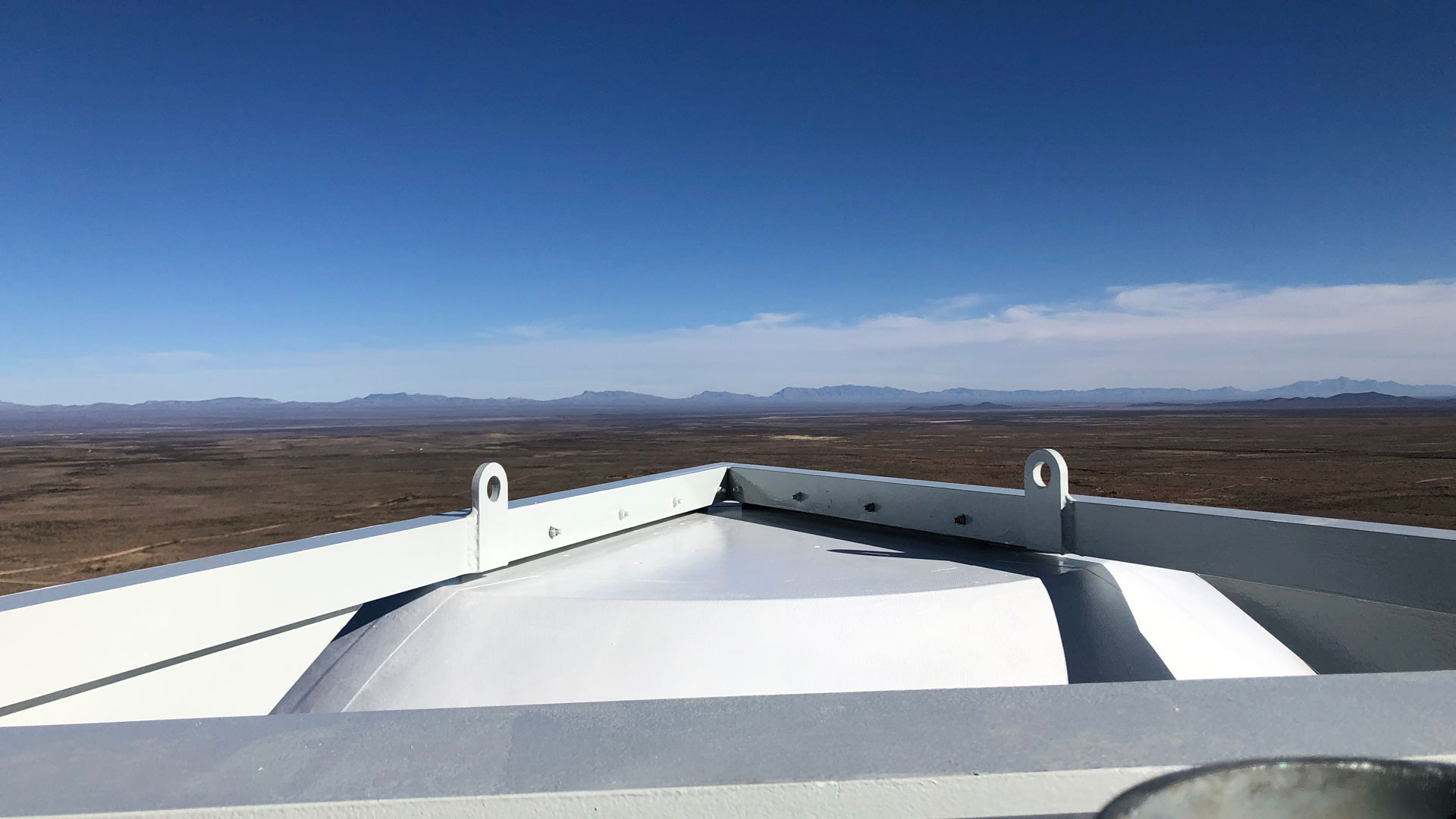

Testing intercell interference
We collaborated with American Tower Corporation (ATC) and C Spire for these trials. The New Mexico trial was conducted in a TD-LTE band, but many MNOs in Africa use LTE in FDD bands. For the New Mexico trial, the SuperCell base station was installed on a small tower on top of a hill overlooking a valley. The idea was to emulate a tall tower so the logistics of installing a massive SuperCell base station atop a tall tower were not fully understood. We addressed these residual risks with another trial in the unincorporated community of Foxworth in Marion County, Mississippi, about three miles southwest of Columbia, Mississippi, along the west bank of the Pearl River.
An important objective of the Foxworth trial was to develop an experimental understanding of intercell interference between SuperCell and macrocells. We set up Cell on Light Truck (COLT) macrocells at near-field (4-kilometer), midfield (10-kilometer), and far-field (16-kilometer) ranges from the SuperCell base station.
The figure below shows detailed drive testing results after the macrocell COLT was placed in the near-field location. Testing concluded that, in near field, SuperCell serves the area surrounding the near-field macrocell very well, and it’s possible to decommission the macrocell when the SuperCell is deployed. At midfield, a SuperCell can coexist with a macrocell and operate on the same spectrum. SuperCell effectively provides extra capacity in the area surrounding the midfield macrocell due to spectrum reuse.
In far-field, SuperCell creates interference in the area surrounding the far-field macrocell, but the SuperCell signal is not dominant enough for the user equipment attached to the macrocell to successfully hand over to SuperCell. This causes performance degradation for the area surrounding the far-field macrocell. In this scenario, the best approach may be to split the available spectrum between the interfering SuperCell sector and the far-field macrocell.



Similar tests were performed for midfield and far field, and are available in our detailed technical publication.
What’s the economic value of SuperCell?
In addition to performing technical tests with the SuperCell concept, the Facebook Connectivity team also conducted several detailed economic analyses.
Greenfield analysis in Nigeria
As mentioned earlier, we analyzed the potential for SuperCell in uncovered regions of Nigeria using publicly available population density data coupled with insight from Facebook Connectivity’s Advanced Network Planning tools. For this analysis, we selected optimal locations for SuperCells and macrocells (conventional three-sector base stations on 30-meter towers) to cover the uncovered populations in the region with similar quality of service, and examined what coverage would look like if 82 SuperCells were placed in the region.
A financial comparison using internal rate of return (IRR) to estimate the profitability of potential investments showed that 76 of the 82 SuperCells in this simulation would have a higher IRR than an equivalent macrocell network. The analysis showed that SuperCell installations on existing tall towers in Nigeria could provide coverage to up to 16.8 million uncovered people in the region — making the business model profitable for both MNOs and tower companies.
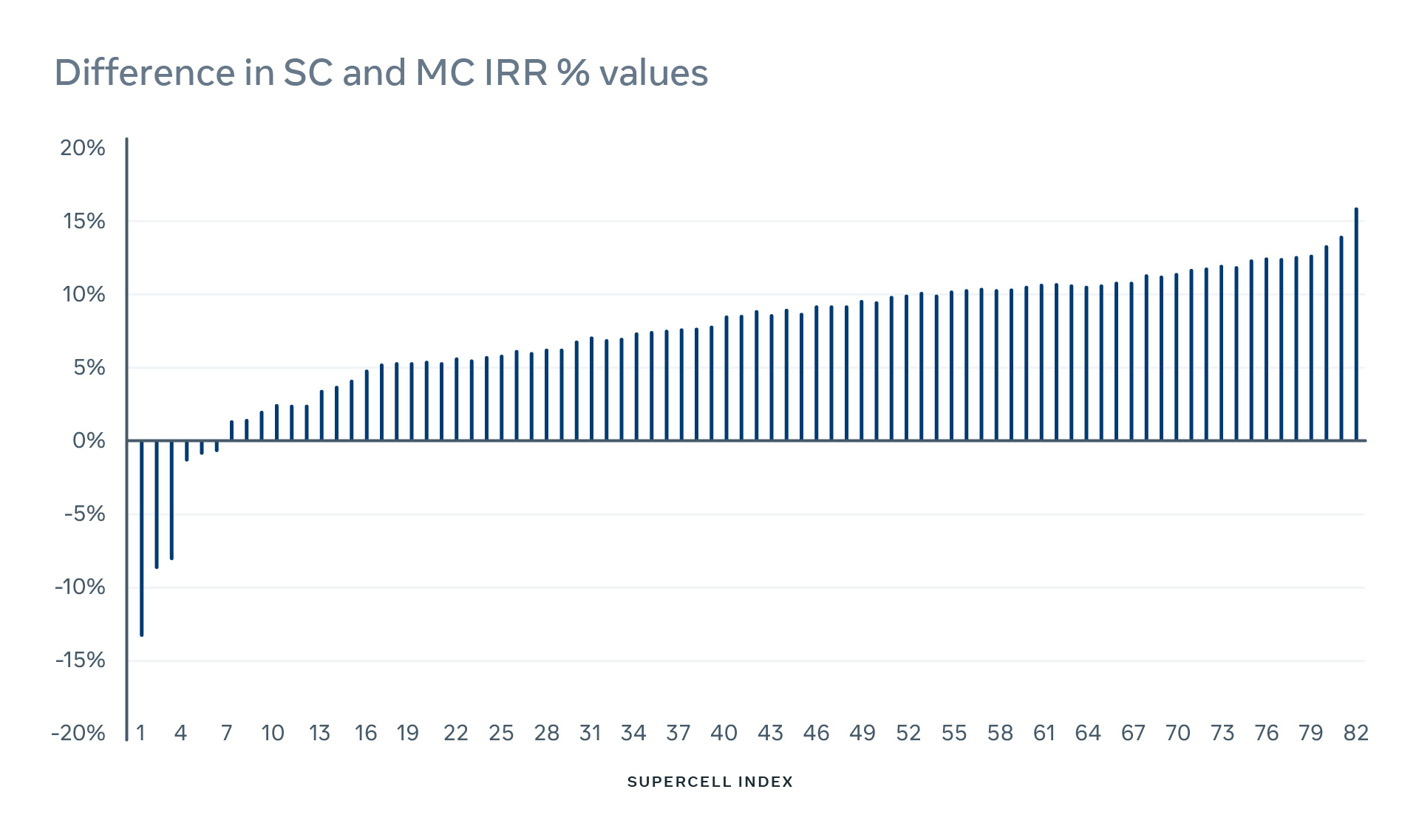
Techno-economic assessment in Cameroon
In further economic analysis, Facebook partnered with an MNO to compare RAN site solutions for uncovered areas in four states in Cameroon: East Cameroon, Adamawa, North Cameroon, and Extreme North.
Four different cell site solutions were compared in this techno-economic analysis:
- Small cells: a single sector cell with an omni-directional antenna on a 10-meter mast
- Macrocells: a conventional three-sector cell on a 75-meter tower
- SuperCell140: a six-sector, high-gain antenna from Radio Innovations AG on a 140-meter tower
- SuperCell180: a six-sector, high-gain antenna from Radio Innovations AG on a 180-meter tower
For this analysis, SuperCell path loss models built by Facebook were calibrated against the path loss models built by the MNO partner using data collected from operational sites in Cameroon. The MNO partner provided techno-economic inputs such as CapEx, OpEx, ARPU, adoption rate, and average usage per user. The analysis was independently conducted using Facebook Connectivity’s Advanced Network Planning tool and the MNO partner’s planning tool.
Our techno-economic analysis compared four different homogeneous network plans built exclusively using the four cell site configurations described above. The output of the analysis in terms of net present value (NPV) of each plan, number of new sites, and incremental covered population is shown in the figure below.
SuperCell140 and SuperCell180 offered better NPV than other alternatives in the states of Adamawa and East Cameroon. For North and Extreme North Cameroon, macrocells offered better NPV, but SuperCell140 was a close second.
Practically speaking, an optimal network plan would be a heterogenous combination of the four cell site configurations listed above. Future work will explore this further.
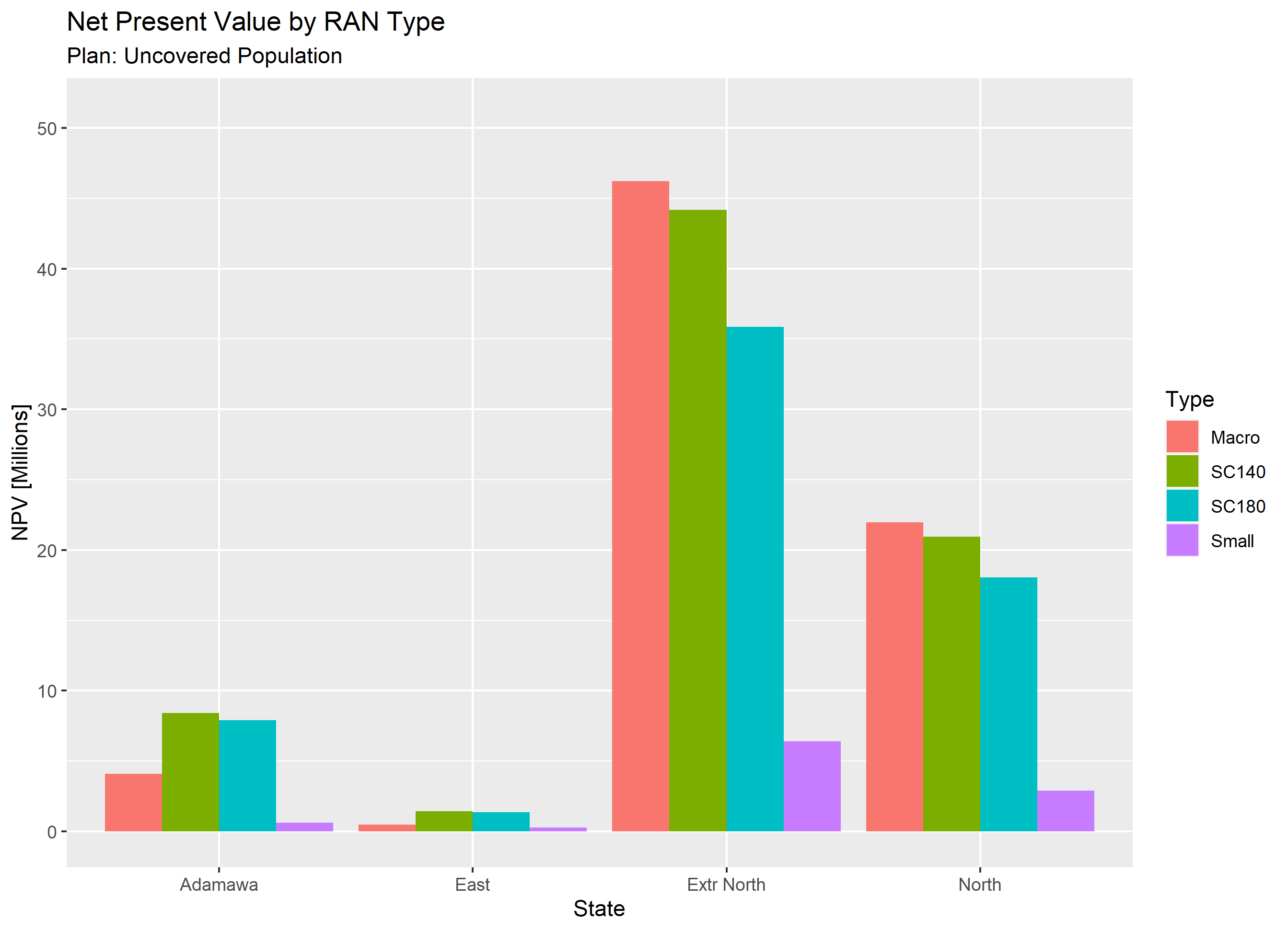
Reaching new heights
Now that we’ve completed partner tests and trials and proved SuperCell’s effectiveness, we’re ready to pass it to the wider telecom industry, and we hope additional partners will join and commercialize the SuperCell technology.
In addition, the Telecom Infra Project (TIP) recently created solution groups to validate end-to-end open network solutions, including a subgroup focused on Network as a Service (NaaS) solutions. Facebook Connectivity will contribute SuperCell technical trial data and business model information to this group, which can be used to help address the lack of high speed internet access in rural and peri-urban areas.
While the connectivity gap is narrowing, the need for connectivity all over the world is accelerating. If more is not done to expand global connectivity, entire communities will be at risk of being further left behind as access to jobs, education, and services such as health care become increasingly dependent on internet connectivity.
SuperCell can provide a cost-effective solution for MNOs and towercos, providing high-speed, reliable connectivity for rural communities and closing a coverage gap that other solutions have yet to fill. With technologies like SuperCell in place, service providers can help ensure that no one is left behind in a connected future.
Read the full technical paper, “SuperCell: A wide-area coverage solution using high-gain, high-order sectorized antennas on tall towers.”



